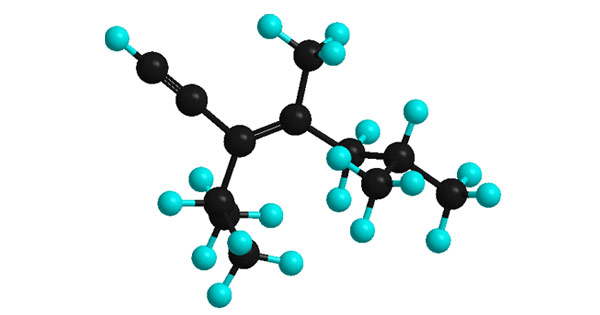Organic compounds that contain only carbon and hydrogen are...
Butane
Alkanes contain only _____________ covalent bonds.
Nonane has
The names of all alkanes end with the suffix ______________________...
Heptane
The ______________________ system names organic compounds according to...
How many structural isomers are there for C4H10?
Alkyl groups are named by removing the-ane ending of the parent ...
Name the structural isomers of C4H10.
What is organic chemistry?
Propane
Name the structural isomers of C4H10.
What is the simplest alkane?
CH3CH2CH2CH2CH3 ...
Molecules that differ only in the spatial configuration of their...
Which 2 statements are true about carbon's ability to form bonds.?
A(n) ______________________ is an atom or group of atoms that replaces...
Hydrocarbons that contain one or more ______________________ covalent ...
Cyclic hydrocarbons that contain only single carbon–carbon bonds...
______________________ is the simplest alkyne, and is also known by...
In general, what determines which structural isomer will have the ...
The simplest arene is ______________________ , which has a chemical...
What are structural isomers?
A double bond ...
The most abundant cyclic hydrocarbons contain ______________________...
Methane, ethane, propane, and butane
What is a branched-chain alkane?
What are structural isomers?
...
The straight-chain alkanes are a(n) ______________________________...
Which family of hydrocarbons are always saturated compounds?
Molecules that differ only in the spatial configuration of their...
What is a cyclic hydrocarbon?
What is an alkene?
How many structural isomers are there for C4H10?
Molecules that have an asymmetric ________ have handedness.
Molecules that exhibit resonance are more ______________________ than...
When ______________________ is a substituent on an alkane, it is...
What are straight-chain alkanes?
______________________ is the simplest alkyne, and is also known by...
______________________ objects will produce a reflection that is ...
Any substance that has carbon–carbon bonding like that of...
What are fossil fuels?
In general, what determines which structural isomer will have the ...
What toxic gas is formed during incomplete combustion of a...
Hydrocarbons and other nonpolar molecules are not attracted to
Why are these two molecules stereoisomers?
What is the chemical formula for a phenyl group?...
Circle the letter of the name of the compound shown ...
What is another name for the dimethylbenzenes?
Pressure, bacterial action, ...
Which noble gas is found in natural gas?
Coal consists primarily of ______________________ compounds of...
Which of these products can be distilled further?
Structural isomers have the ____________ physical...
What is an asymmetric carbon?
Derivatives of benzene that have ______________________ substituents...
______________________ combustion of a hydrocarbon produces a blue...
How is crude oil refined?
Using a catalyst and heat to break hydrocarbons down into smaller...
Lignite; about 50%...
Why were the arenes originally called aromatic compounds?
What does it mean to say that benzene exhibits resonance?
Propane and butane are sold in ______________________ form to be used ...
What are the major attractive forces between alkane, alkene, or alkyne...
Why are hydrocarbon molecules such as alkanes nonpolar?
Organic compounds that contain fewer than the maximum number of ...
Match the terms for naming a disubstituted benzene with the...
What major air pollutants are produced by burning coal that contains...
A double bond ...
Match the terms for naming a disubstituted benzene with the...
Crude oil is commercially useful _____________refining.
______________________ is the intermediate material that is the first...
Mirror images that cannot be placed on top of each other to form a...
Petroleum and natural gas contain mostly...
The first oil well was drilled in ______________________ in the late...
What are the major attractive forces between alkane, alkene, or alkyne...
Natural gas and petroleum are often ...
The letter of the distillation fraction that represents the highest...
Aromatic compounds produce more ______________________ when burned ...
Structural isomers have the _____________physical properties.
Gas, coke, coal tar, ammonia
______________________ are a special group of unsaturated cyclic...
















